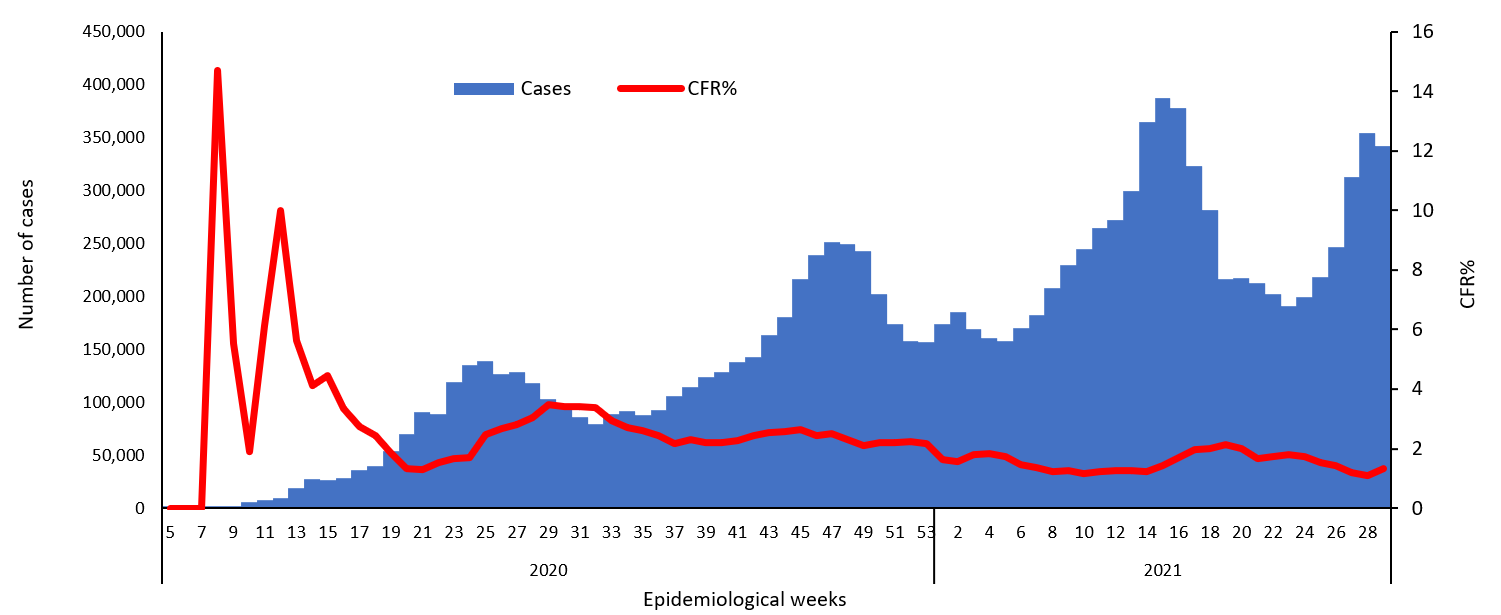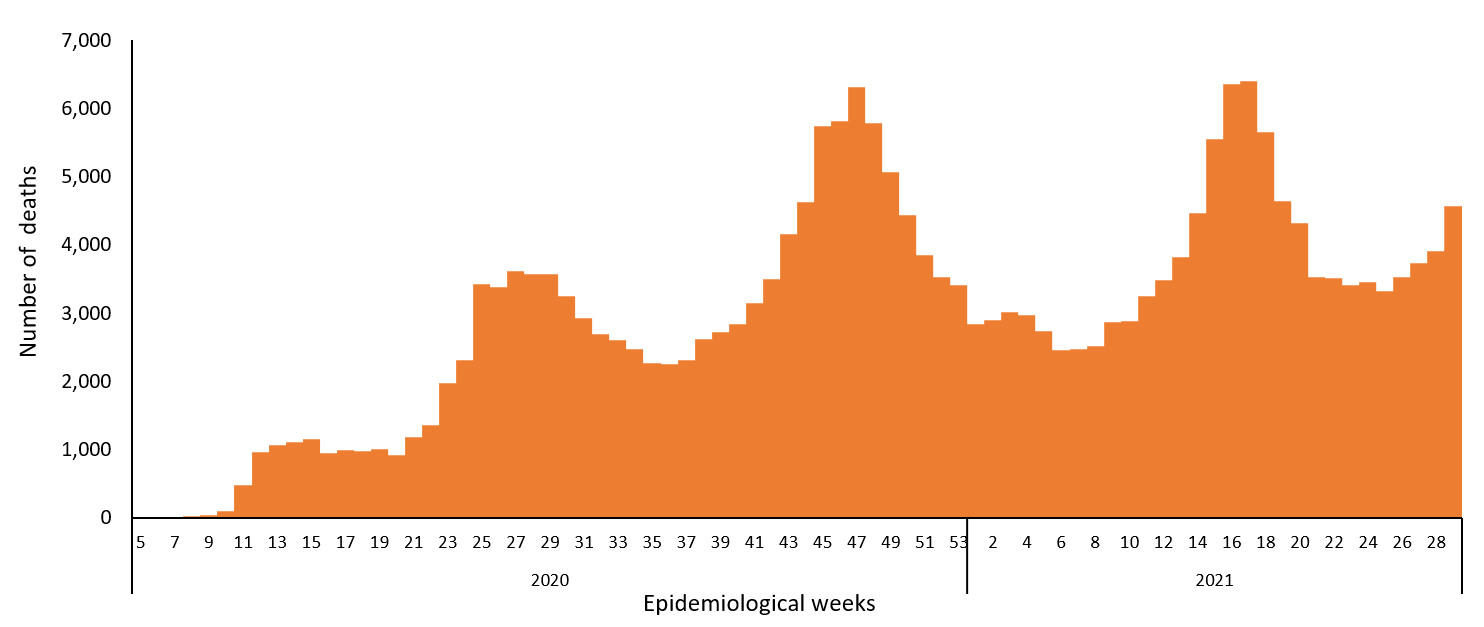The coronavirus disease COVID-19 continues to spread at the regional and global levels. As of 24 July 2021, the global cumulative incidence reached 193 071 646 reported cases and 4 145 998 associated deaths with a case fatality ratio (CFR) of 2.1%. Meanwhile, the 22 countries of the Eastern Mediterranean Region (EMR) have reported a total of 12 149 134 cases, which represent about 6.3% of the global count, with 231 263 associated deaths (CFR 1.9%). Most countries in the Region are in the community transmission phase.
Since the beginning of the outbreak, the country that has reported the highest number of total cases in the Region is Islamic Republic of Iran (3 664 286 cases; 30.2% of the Region’s total), followed by Iraq (1 543 501; 12.7%) and Pakistan (1 004 694; 8.3%). Islamic Republic of Iran also reported the highest number of total associated deaths (88 532; CFR 2.4%) followed by Pakistan (23 016; CFR 2.3%) and Tunisia (18 804; CFR 3.3%). The highest CFRs were reported by Yemen (19.6%) followed by Sudan (7.5%), while the lowest CFRs were reported by Qatar (0.27%), United Arab Emirates (0.29%) and Bahrain (0.51%).
During epidemiological week 29, the Region reported a decrease in cases of 3.6% when compared to the previous week (341 701cases compared to 354 529 cases). On the other hand, an increase of 16.8% was observed for associated deaths (4576 deaths compared to 3917 deaths).
Libya, Tunisia, and Islamic Republic of Iran reported a relative increase in COVID-19 activity in week 29. The cumulative number of cases increased from 221 495 to 233 449 in Libya (an 5.4% weekly increase), from 546 233 to 573 394 in Tunisia (a 4.9% weekly increase) and from 3 501 079 to 3 664 286 in Islamic Republic of Iran (an 4.7% weekly increase). Oman, Tunisia and Afghanistan had the largest relative increase in deaths.
In terms of testing, a total of 185 977 888 laboratory PCR tests were conducted since the start of the outbreak across the Region including 3 951 794 tests in week 29, which shows an 18.1% decrease compared to the previous week when 4 827 536 tests were conducted. The highest number of PCR tests were reported from United Arab Emirates (63.9 million), followed by Islamic Republic of Iran (25.5 million) and Saudi Arabia (24.3 million). The United Arab Emirates and Bahrain are performing the highest rates of testing per capita (6401/1000 and 3060/1000, respectively). The average positivity rate for the Region is 6.5%. WHO recommends a positivity rate of around 3–12% as a general benchmark indicating adequate testing, which was achieved in most countries of the Region.
Meanwhile, COVID-19 vaccination continues across the Region. The total number of doses administered so far in the 22 countries is 122 490 288. Saudi Arabia has administered the highest number of doses at 24 260 005 followed Morocco by at 21 522 436 and United Arab Emirates at 16 444 844. On the other hand the total number of administrated doses in Sudan is 810 560, in Libya is 480 116, in Yemen is 297 405, in Somalia is 249 790, in Syria is 2 420 468 and in Djibouti is 26 796.*
Supporting countries in the Region
The regional incident management support team continues to coordinate the response and provide technical support to countries and partners in the Region in the areas of coordination and partnership, surveillance, laboratory capacity, clinical management, infection prevention and control, risk communication and community engagement, points of entry according to the International Health Regulations (2005), research, health systems, and essential health services among others.


For more data from the Region, please visit the COVID-19 dashboard.
*The data on vaccination is obtained from a number of sources including media reports and country websites for ministries of health.
Subscribe to the monthly infectious hazard preparedness newsletter of WHO’s Health Emergencies Programme for latest data and analysis on epidemic- and pandemic-prone diseases, as well as news on outbreak preparedness and response within WHO’s Eastern Mediterranean Region.


